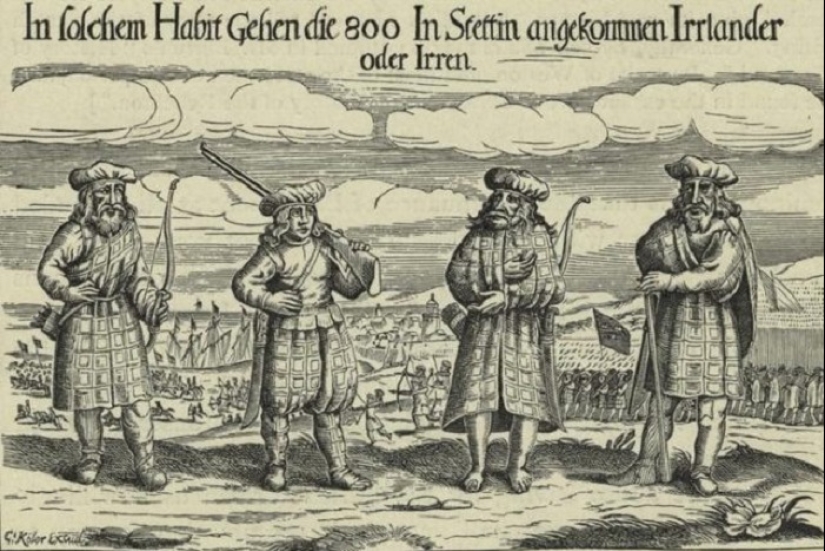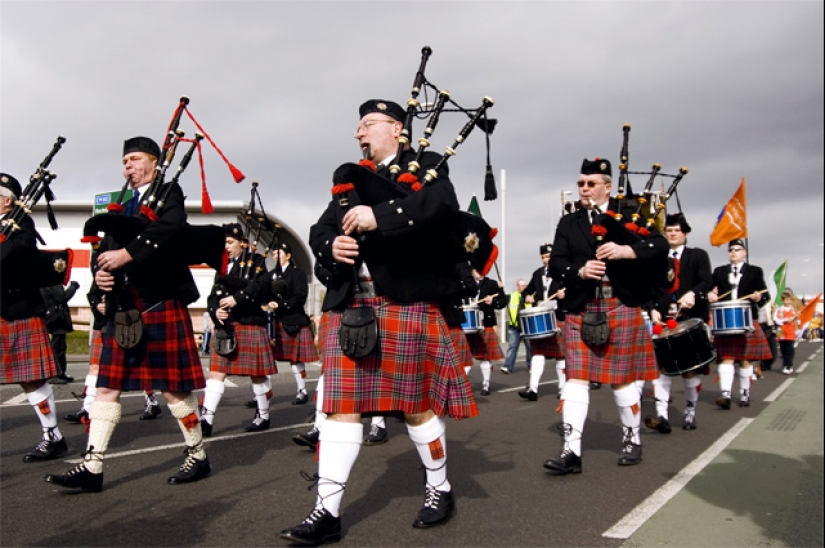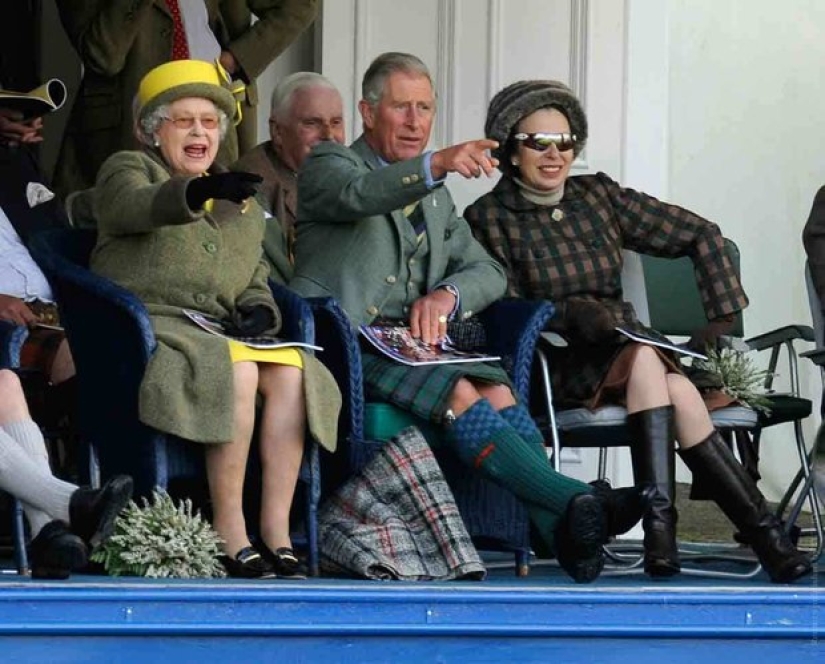Everything you wanted to know about the kilt but were afraid to ask
Categories: Culture | History | Nations
By Pictolic https://pictolic.com/article/everything-you-wanted-to-know-about-the-kilt-but-were-afraid-to-ask.htmlKilt — traditional dress of the highlanders of Scotland — is the national pride of the country. In ancient times, this wool piece of clothing, like a skirt, performed an important function: the color of the ornament was identified as belonging to one of the ancient clans. Now colors — the so-called tartans became, of course, much more. Among them are Russian special tartan. Only him, if we follow tradition, we can carry with you.

Scottish kilt made of special fabrics — tartan, woven from natural wool. In the usual sense kilt looks almost no different from pleated skirts but in the Middle ages, its length can reach seven meters. If necessary, they could wrap the whole body to protect themselves from the cold.

The word "tartan" of Celtic origin, meaning "the color of the ground." Originally tartans (the ornaments, not fabric) belonged to eleven Scottish clans inhabiting different areas of the country, was created in strict accordance with the laws of heraldry. Therefore, the color of the pattern can easily identify where they came from people.

The earliest image of Scottish soldiers in kilts, woodcut, 1631.
Until the nineteenth century for dyeing yarns tartan was used only natural dyes. Alder received a black shade, birch, yellow, Heather gave threads orange, blueberry purple, BlackBerry blue. Red tartan was considered a sign of affluence, because with the help of natural dyes red color to be problematic.

In the middle of the XVIII century, when the British suppressed the Jacobite rising, they forbade the Scots to wear kilts. Some obeyed the order, but the Scots, who lived high in the mountains, did not take off the kilt, even under pain of death.

The painting "the Battle of Culloden". The result of this battle, the rebellion raised by the Scots to return to the throne of Britain race of the Stuarts, was completely suppressed.
The only one who was allowed to wear kilts were servicemen of special Royal regiments patrolling the mountains of Scotland. They wore tartan Black Watch ("Black watch") is one of the most recognizable patterns, which became the first military tartan.

After the ban was lifted, it became clear that many of the traditional coloring of the tartan forgotten. Then began a large-scale campaign for the revival of national heritage. Tartans restored from paintings and old books tailors.

In 1822, in Edinburgh came king George IV and declared: "Let each one has its own tartan". This variety of tartans began to grow exponentially. Today, there are more than four thousand species. The most popular of them:

1. Caledonia is a universal tartan, which can wear every Scot.
2. Black Watch.
3. Campbell Dress — front tartan of clan Campbell.
4. Burberry — tartan, worn by the generals of the British army during the Anglo-Boer war.
5. Dress Gordon — elegant version of the tartan of clan Gordon.
6. The Royal Stewart is the most well-known tartan in the world belonging to the Royal Stuarts.

In addition to the clan colours, there are many, so to speak, highly specialized tartans. Your brand the prints have a lot of public organizations and public institutions, including Royal Bank of Scotland. Have mourning tartans, hunting, festive...

Established in 1963, the Society of Scottish tartan (Scottish Tartans Society) assigns all registered patterns unique code — the number of threads of each color.
There is also a "Russian" tartan. It is made up of tartans Barclay and Lermontov, named respectively in honor of General Mikhail Barclay de Tolly and poet Mikhail Lermontov, who had Scottish ancestry.

Keywords: Culture | History | Peoples | Scotland | UK | Colour | Clothing | Kilt
Post News ArticleRecent articles

Twitter user @FactBuffet collects interesting facts about everything. Today we bring to your attention another series of facts that ...

Aomori Prefecture in the north of the Japanese island of Honshu is an agricultural region famous for its delicious apples. In ...
Related articles

Compared to the 1970-ies 1980‑e years were a time of cautious optimism in new York. Boom on wall street fueled the speculative ...

What kind of wedding traditions do not happen! The Scots pour dirty slush over the bride, some peoples of India have decided to get ...

Many are tormented by the question — why do some grow long nails on his pinky. If you ask the owners of such "decorations", we ...

Imagine a baby vampire or a tiny zombie with glass eyes ... An artist from the USA Bean Shanine specializes in creating such ...